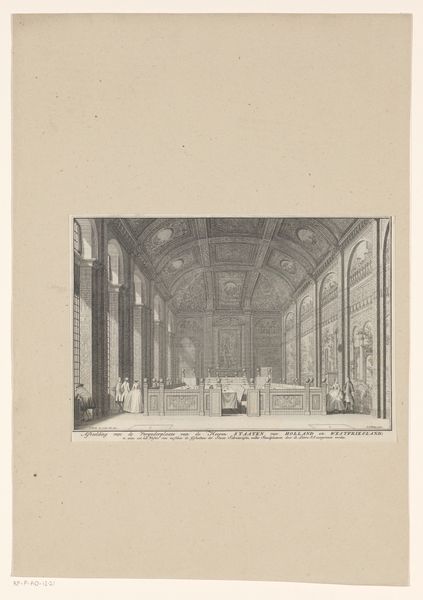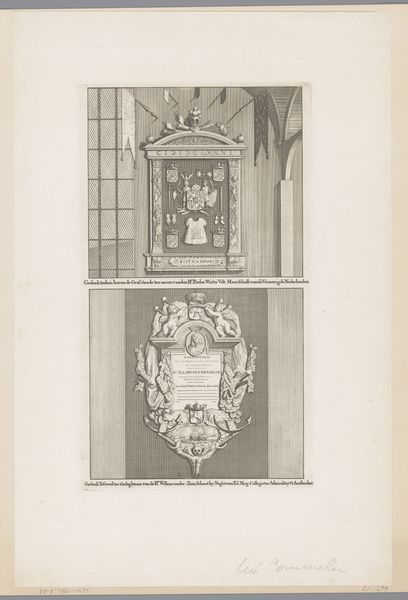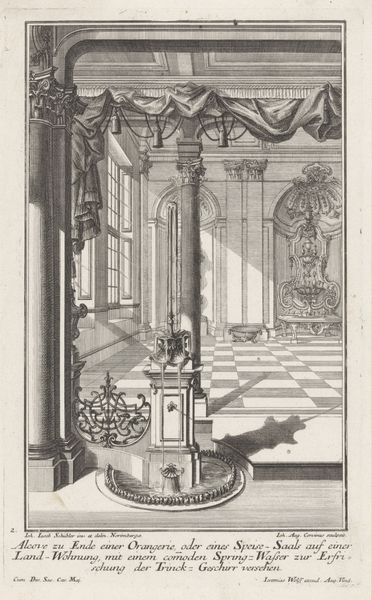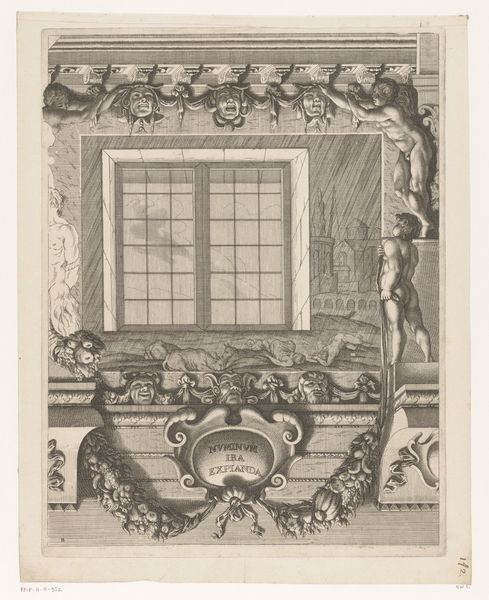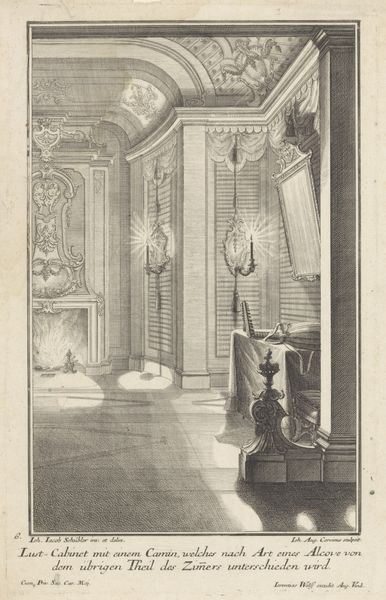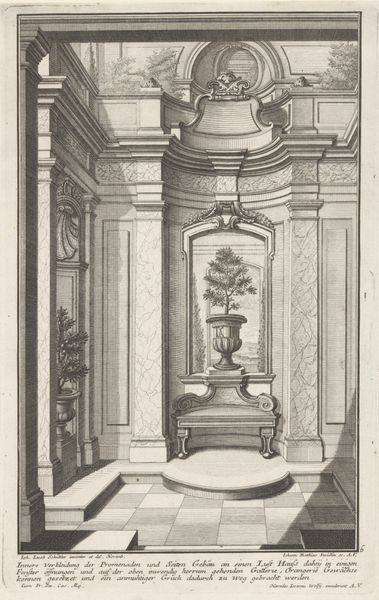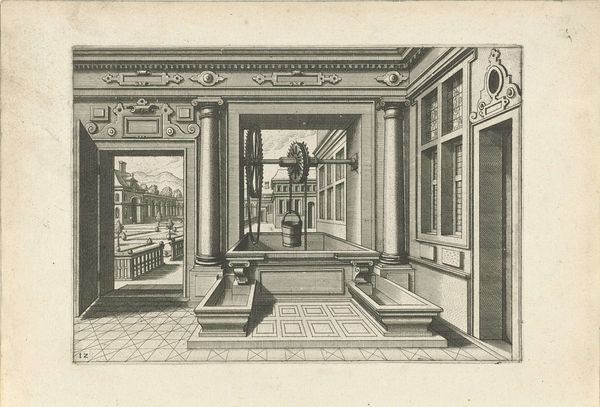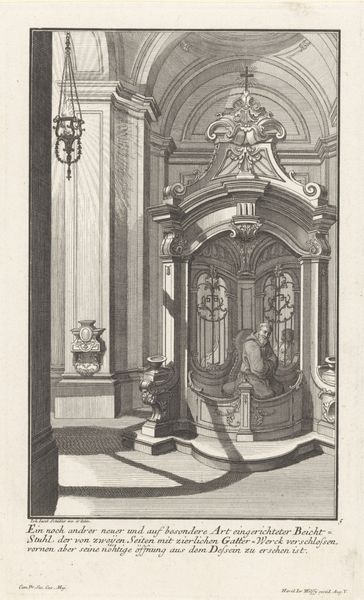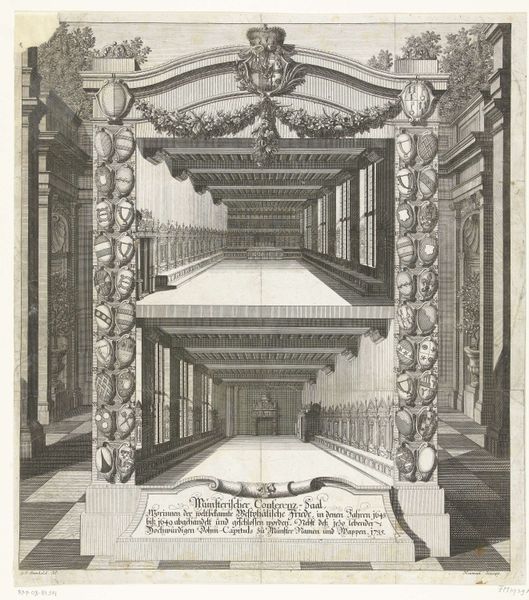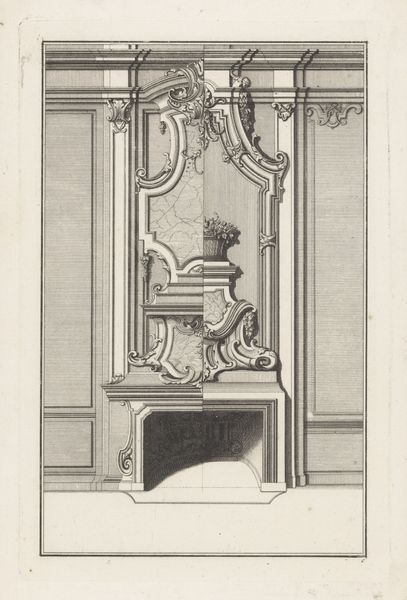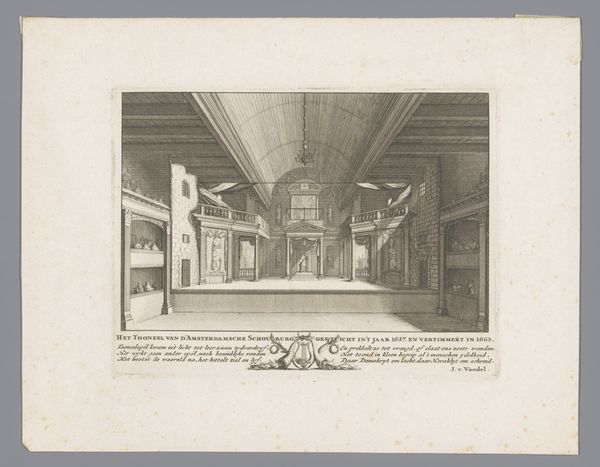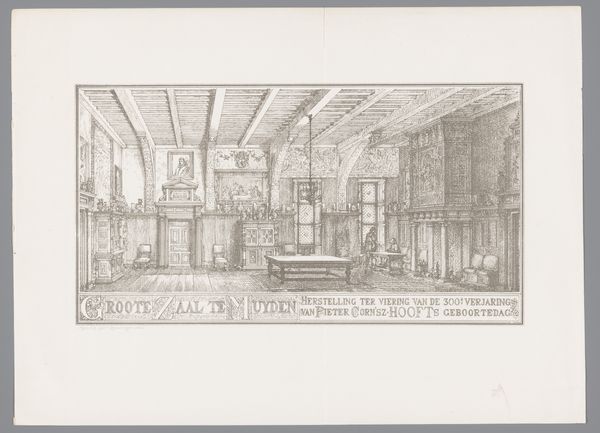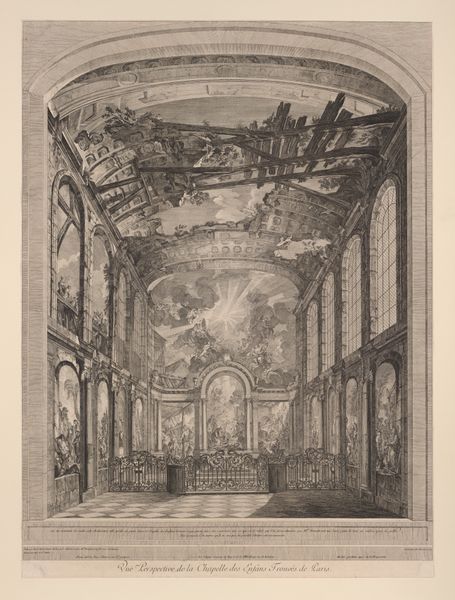
engraving, architecture
#
baroque
#
cityscape
#
history-painting
#
engraving
#
architecture
Dimensions: height 390 mm, width 309 mm
Copyright: Rijks Museum: Open Domain
Editor: We're looking at an engraving from 1742 by Michael Rössler, called "Interior of staircase in the town hall of Frankfurt am Main." It's striking how the artist captured the grandeur of the Baroque architecture; you can really sense the power and prestige embodied in this civic space. What stands out to you most about this piece? Curator: For me, it's about understanding the function of images like this within 18th-century society. This isn't just a picture; it’s a representation of civic pride and power meant for public consumption. Engravings like this one, widely distributed, shaped perceptions of Frankfurt's political and cultural identity far beyond the city walls. How do you think the scale of this depiction, the soaring height of the staircase, affected its original audience? Editor: I imagine it created a sense of awe and reinforced the authority of the city government. Knowing this was meant for wide circulation definitely shifts my understanding from simply admiring the artistic skill. So, the artist is participating in a project of reinforcing civic pride? Curator: Precisely. And the style reinforces that as well; the Baroque style wasn't just about aesthetics; it was very deliberately deployed to communicate power and authority through scale, decoration, and symbolism. Do you notice how the eye is drawn upwards towards the ceiling? That’s very intentional. Editor: It's almost like looking up to heaven, associating the earthly power of the city with divine endorsement. It makes you think about the complex interplay of art, power, and public image, it adds another dimension to simply looking at old buildings. Curator: Exactly, seeing the architecture not just as a structure, but as an active participant in shaping socio-political attitudes is key. I think that context really elevates one's appreciation for the artistry and social implications behind these architectural records. Editor: I will never look at architecture prints the same way, it is much more that a depiction of buildings, it's a snapshot into the cultural values of a time period!
Comments
No comments
Be the first to comment and join the conversation on the ultimate creative platform.
